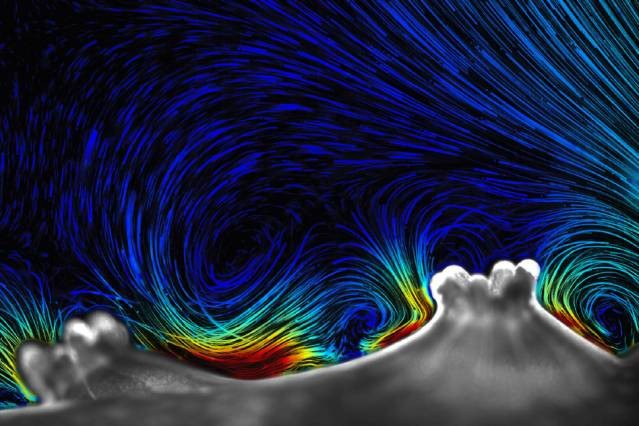A new paper published by MIT has provided a deeper understanding into how coral utilize their external cilia in respiratory and metabolic processes. “These microenvironmental [findings] are not only important, but also unexpected,” says Roman Stocker, an associate professor at MIT and senior author of the paper. “The general thinking has been that corals are completely dependent upon ambient flow, from tides and turbulence, to enable them to overcome diffusion limitation and facilitate the efficient supply of nutrients and the disposal of dissolved waste products,” adds Orr Shapiro, co-first author of the paper. “I was expecting that this would be a smooth microworld, there would be not much action except the external flow.” said Stocker. However, upon closer, microscopic inspection, he and his team found that it is in-fact “very violent.” “It appears that most if not all [coral] have the cilia that create these flows. The retention of cilia through 400 million years of evolution suggests that reef corals derive a substantial evolutionary advantage” Said Shapiro, and “It’s rare that you have a situation in which you see cilia on the outside of an animal,” adds Stocker. David Bourne, a researcher at the Australian Institute of Marine Science who was not connected with this research, says the work has “provided a major leap forward in understanding why corals are so efficient and thrive. … We finally have a greater understanding of why corals have been successful in establishing and providing the structural framework of coral reef ecosystems.” Read more here!
“It appears that most if not all [coral] have the cilia that create these flows. The retention of cilia through 400 million years of evolution suggests that reef corals derive a substantial evolutionary advantage” Said Shapiro, and “It’s rare that you have a situation in which you see cilia on the outside of an animal,” adds Stocker. David Bourne, a researcher at the Australian Institute of Marine Science who was not connected with this research, says the work has “provided a major leap forward in understanding why corals are so efficient and thrive. … We finally have a greater understanding of why corals have been successful in establishing and providing the structural framework of coral reef ecosystems.” Read more here!









0 Comments